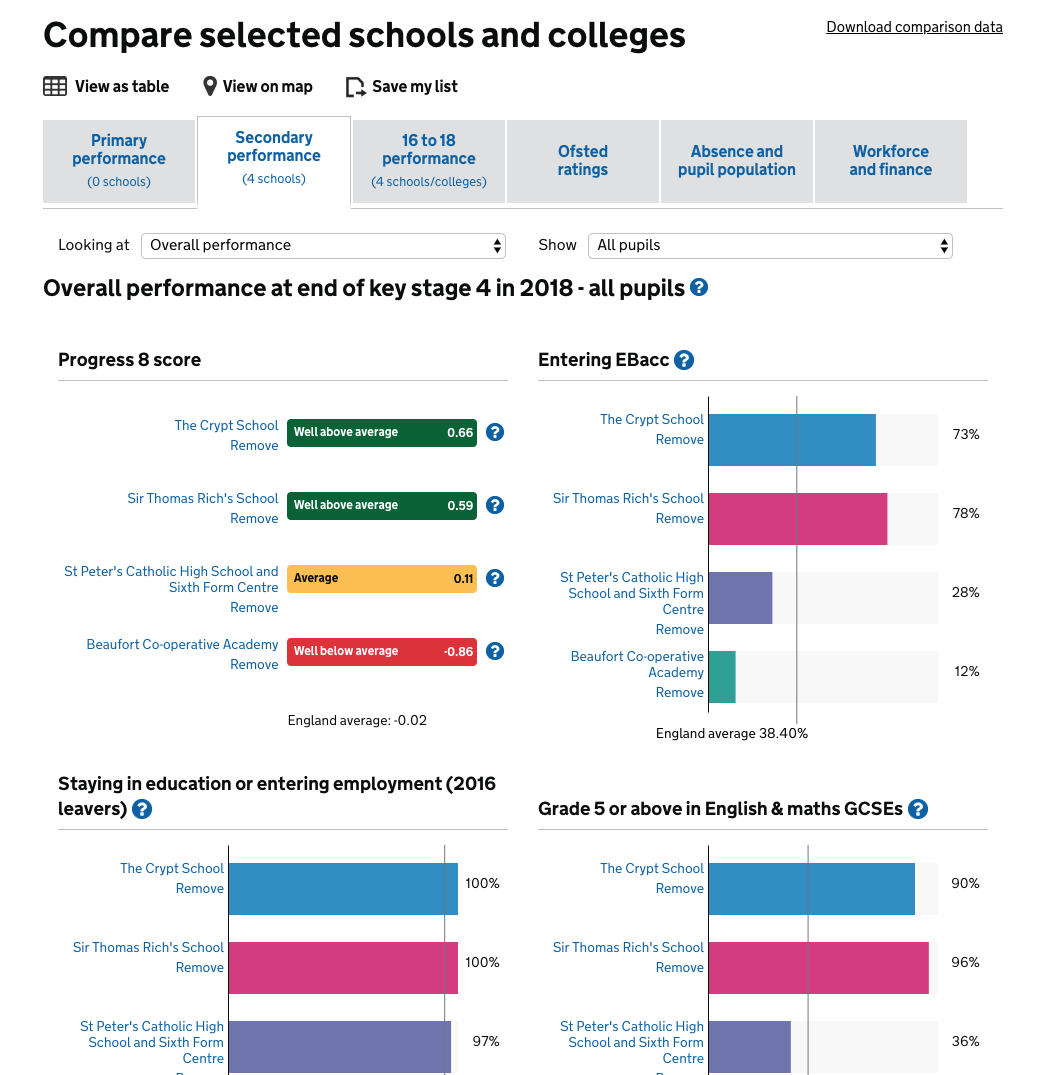Data Nuggets: Schools in the South West
As CG explores the use of data to support arts engagement in schools, we will signpost a range of datasets you might find useful when planning new projects or longer-term strategies.
First up: school data.
At a recent Arts Awards deep dive with RIO, artists and organisations said that easy to access data on schools and social need was a top priority as this would help prioritise limited resources on those young people least likely to access cultural education outside of school.
Comparing school performance
The Department for Education collect and publish a wealth of data on schools. On their ‘Find and Compare Schools’ platform you view a range of statistics on educational attainment, the number of teachers, pupil absences and Ofsted ratings.
Find school performance data at https://www.compare-school-performance.service.gov.uk/
Understanding pupil characteristics
There is even more data available from the annual School Census, including data on:
The age profile of school students;
The number and percentage of students eligible for, or in receipt of, free school meals (FSM) - an indicator of social need;
The number of students with a first language other than English.
However, the School Census, which is released once a year, is published as a mega-spreadsheet, which can be hard to navigate.
So, we’ve taken the data, filtered it to pull out the data for the South West, and uploaded it into AirTable, an easy-to-use online database. Below you will see all the secondary schools in Gloucestershire, sorted from those with the highest percentage of students eligible for free school meals, to the least. You can add your own filters, or change the sorting, using the links at the top (unless accessing from a mobile phone when the filters will not display).
And in this copy, you can find all the schools from the South West: so to start your own exploration you may want to begin by adding a regional or school type filter.
Mapping Arts Mark schools
In the tables above we have also merged in data from Artsmark on the schools which are registered for, working towards, or which have achieved, Artsmark.
Artsmark publish a spreadsheet twice a term of schools and settings. Because this uses a unique Department for Education identifier for each school, it was easy to merge into our Airtable.
Because the data also contains postcodes, we could filter to the Gloucestershire locations in Excel, and then paste rows into BatchGeo, which creates a geocoded map of schools with Artsmark.
Focus on funding
One last source in the mix: SchoolCuts.org.uk presents data on the funding available to each school, looking at the change in funding between 2015 and 2020, and calculating per-pupil changes in funding.
Filling the gaps
One thing we are still looking for data on is the extent of arts and cultural education in schools. Although the Department for Education collect data on the number of teachers in each subject, we’ve not found published data to draw upon at the school level.
This will be something we explore in our upcoming Data | Create Hackathon this spring/summer. If you want to find out more about that, get in touch with tim@practicalparticipation.co.uk.


